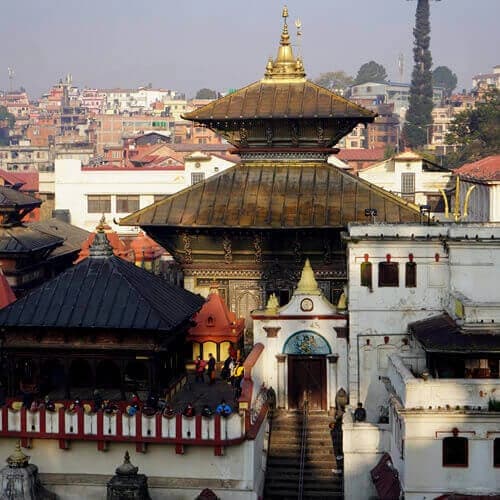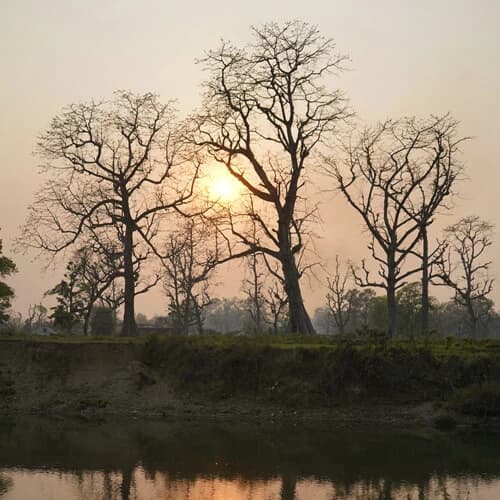Bhutan Visa and Flight Information
Travelers will require a Bhutan tourist visa to begin this trek. The application fee for the visa is 40 USD per person. In addition to this, you need to pay an SDF fee of 100 USD per day. Visitors from India, Bangladesh, and the Maldives are exempted from Bhutan tourist visas but will require a special permit. For more information, please visit the official immigration site in Bhutan. Please remember that your tour operator processes the Bhutan visa and special permit. We advise you to begin the application at least a month before your departure for a smooth process. You must provide a copy of your passport, travel insurance, and two passport-size photos. On the other hand, you will need the same document to book a flight to Bhutan. As only a few airlines operate from selected cities to Bhutan, it is essential to make the reservation early for a smooth and seamless journey.
Risk of Altitude Sickness and Acclimatization Tips
The Jomolhari Trek reaches elevations above 4,800m, and the altitude gain can lead to travelers suffering from altitude sickness, a common illness. The condition occurs due to the low oxygen level in the higher altitude region of the Himalayas. Symptoms such as headache, dizziness, nausea, fatigue, and shortness of breath can develop if the body doesn't acclimatize properly. To stay safe, it's crucial to ascend gradually and follow the "climb high, sleep low" principle. Hydration is key; drink at least 3-4 liters of water daily to help your body adjust. Avoid alcohol and excessive caffeine, as they can dehydrate you and worsen symptoms. If you experience severe altitude sickness symptoms, such as confusion or difficulty breathing, descend immediately to a lower altitude. Carrying Diamox (acetazolamide), a medication that helps with acclimatization, can be beneficial, but consult a doctor before use.
Our Itinerary is designed with proper acclimatization.
To ensure a successful trek, we spend a night in Paro (2,200m) before starting to allow your body to adjust. The trek is tailored with natural acclimatization points, such as Jangothang (4,080m), where trekkers usually take a rest day to explore and adapt to the altitude. We advise you to walk at a steady pace, avoiding rapid exertion. Listen to your body if you feel overly fatigued, and take breaks as needed. Following these precautions will help you enjoy the Jomolhari Trek safely and make the most of its breathtaking landscapes.
How difficult is Jomolhari Trek?
The Jomolhari Trek is considered a moderately complex trek due to its high altitude and the challenging terrain. Trekkers must make steep ascents, hike on rugged trails, and cross some technical sections. The weather is unpredictable, especially at higher altitudes, and travelers may experience sudden rain or snow on the trail. You will walk 5 to 8 hours daily for 10 days through remote areas with limited facilities. As a result, you must be resilient and self-sufficient and follow the guide's lead for a safe and successful journey. Regardless of the challenging nature of the trek, the breathtaking views of Mount Jomolhari, stunning landscapes, and the opportunity to experience Bhutanese culture make it an enriching experience.
Is trek suitable for you?
The Jomolhari Trek is suitable for physically fit travelers who have experience with long, multi-day treks. Good physical preparation, prior trekking experience, and a strong mental attitude are crucial to completing this trek successfully. Ideally, you should be in good health and able to handle long hiking days, typically 5 to 8 hours, with steep ascents and descents. A moderate to high fitness level is necessary, especially since the trek reaches altitudes over 4,000 meters, and acclimatization is essential to prevent altitude sickness. You'll be well-prepared if you have prior experience in high-altitude trekking or are willing to train. You should also have a resilient and positive attitude, as the trek can be physically and mentally challenging, with unpredictable weather conditions and limited facilities. If you're excited about an exciting adventure in the Himalayas with the opportunity to immerse yourself in Bhutanese culture, the Jomolhari Trek could be a great fit for you.
Note: If you are new to trekking, we can recommend treks that are laid back and don’t require previous experiences. The Jomolhari Trek can also be tailored with additional rest days to allow your body to adjust and rest for an immersive experience in Bhutan.
How you must prepare for the trek
Preparing for the Jomolhari Trek focuses on physical conditioning, mental readiness, and logistical planning. Begin training at least three to six months in advance, emphasizing cardiovascular fitness, leg strength, and endurance through hiking, running, and stair climbing. Additionally, you’ll need proper gear, including sturdy trekking boots, layered clothing for various weather conditions, a good sleeping bag, and a rain jacket. Pack lightweight but essential items such as a first aid kit, water purification tablets, and snacks. Apart from this, you must mentally prepare for a long and exhausting hike. We suggest you set a realistic goal and practice mindfulness to calm yourself while facing challenges on the trail. It is also advisable for you to consult a healthcare professional to assess any underlying conditions you might have. By doing so, you can acknowledge if it might affect your physical performance on the trail.
Tips for Maximizing Your Jomolhari Experience
To enhance your Jomolhari trek experience, visit hidden spots along the route, like Taktsang Monastery near Paro and remote yak-herder villages, which offer an authentic experience. Take your time to enjoy the tranquility of isolated campsites, where breathtaking views of Jomolhari and the Himalayas surround you. Experienced trekkers advise not to rush; slowing down lets you soak in Bhutanese culture, and the local food adds a unique touch. For the best photos, plan your hikes for early morning or late afternoon when the light is perfect for capturing the scenery.
Experience Local Bhutanese Cuisine and Hospitality
As you trek through the majestic Jomolhari route, you'll experience breathtaking landscapes and get a taste of Bhutan's unique culinary culture and warm hospitality. Traditional Bhutanese meals feature simple, hearty ingredients like rice, buckwheat, and barley, often accompanied by side dishes. Ema Datshi, a spicy cheese and chili stew, is a must-try staple in Bhutanese households. Along the trail, you'll be served local meals such as red rice with yak meat curry or sukuti (dried meat), often seasoned with fresh herbs and chilies. These meals provide much-needed energy for trekkers, and the flavors reflect the region's Tibetan and Himalayan influences. For accommodation, trekkers often stay in homestays hosted by local families. In these humble mountain homes, you can enjoy butter tea (suja), made from tea, butter, salt, and ara, a traditional homemade spirit. These cozy stays offer a more profound cultural experience and allow you to experience Bhutanese hospitality while learning about their customs and lifestyle.
Reflecting on Conservation and Cultural Legacy
The Jomolhari trek is a physical journey and an opportunity to reflect on the importance of conservation and cultural legacy. As you traverse pristine landscapes, walk through lush valleys, and witness the majestic peaks, it becomes clear how vital it is to preserve these natural wonders. Through its sustainable practices and eco-conscious approach, the trek encourages trekkers to tread lightly on the land, reducing their environmental footprint by following Leave No Trace principles. Bhutan, known for its commitment to carbon-negative status, offers an inspiring model of how tourism can coexist with nature. Additionally, the trek immerses you in Bhutanese culture, where traditions and values are passed down through generations. Staying with local families and respecting local customs fosters cultural appreciation and ensures these practices continue. Trekkers should positively impact local economies and promote a deeper understanding of how intertwined conservation and cultural preservation are for future generations.





